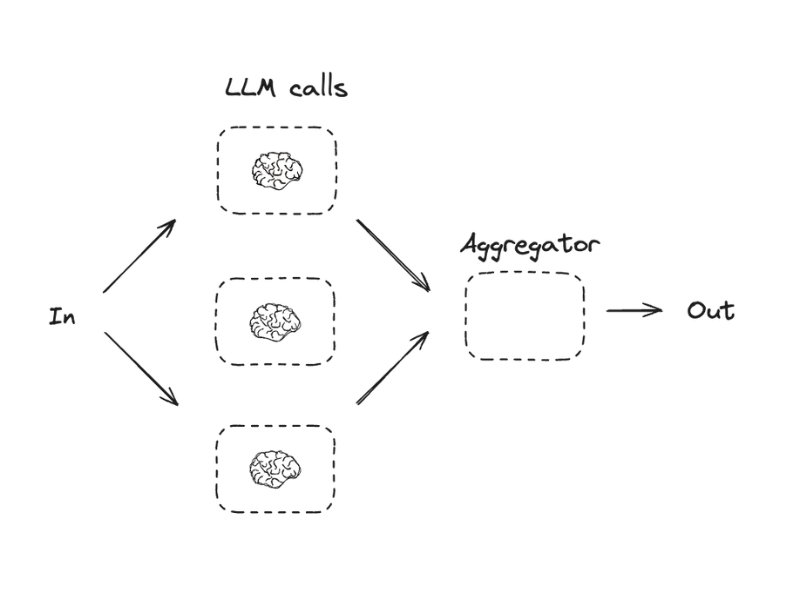Parallelization (The Professional Kitchen Analogy)

Imagine you are the head chef of a restaurant and you have to prepare a huge banquet.
You have two big challenges: you need the food to come out fast and to be of the highest quality. It would be impossible for you to do everything on time and perfectly by yourself.
This is where you use Parallelization, which is simply having several chefs (several LLM calls) work at the same time. There are two main ways to organize your team:
1. Segmentation (Divide and Conquer) 🔪🥕🥔 This is when you assign each chef a different and independent part of the banquet.
- Chef A: "You take care of the salad."
- Chef B: "You handle the main course."
- Chef C: "You're on dessert."
None of them depend on the others, so they can all work at once (in parallel). In the end, you put everything together and have the complete banquet much faster. This is ideal for speeding up the work.
2. Voting (Multiple Opinions for the Best Recipe) 👨🍳👩🍳🧑🍳 Now imagine you have to create a new and very complex dish, and you want it to be absolutely perfect.
- You give the same task to three of your best chefs: "Prepare your best version of a mushroom risotto."
- The three of them work in parallel in their own kitchens.
- In the end, you taste the three risottos. You can choose the one you like best (the "best vote"), or even combine the best ideas from the three to create a final version.
This isn't about being faster, but about increasing the quality and confidence in the final result, by exploring different approaches to the same problem.
Real-World Example: "Customer Review Analyzer"
Imagine you have an online store and you receive hundreds of reviews for a new product. You want to analyze them quickly to understand what your customers think.
❌ The Wrong Approach (A single call):
"Read the following 200 product reviews and tell me the overall sentiment, the most mentioned topics, the reported problems, and suggestions for improvement."
A single LLM call might get confused, mix up topics, or give you a low-quality summary by trying to do everything at once.
✅ The Right Approach (Parallelization):
1. Using "Segmentation" for speed and focus: You launch 3 LLM calls at the same time, each with a specific task on the same block of reviews.
- LLM Call A (Sentiment Analyst):
- Prompt:
"Analyze these reviews and classify the overall sentiment as Positive, Negative, or Neutral."
- Prompt:
- LLM Call B (Topic Extractor):
- Prompt:
"Extract and list the 5 most mentioned topics or product features in these reviews (e.g., battery, screen, price)."
- Prompt:
- LLM Call C (Problem Identifier):
- Prompt:
"Identify and summarize any recurring problems or complaints mentioned in these reviews."
- Prompt:
Result: In the time it takes for the longest call, you get three different, clean, and focused analyses, ready to be combined into a complete report.
2. Using "Voting" for quality and confidence: Suppose a review is very long, complex, and ambiguous, and you need to understand what the main complaint is to be able to resolve it.
- The same task for 3 LLMs (or 3 calls to the same one):
- Prompt:
"Read the following complex review and summarize in a single sentence what the customer's main problem is."
- Prompt:
- You launch the same prompt 3 times in parallel.
- Possible Outputs:
"The customer is frustrated because the device's battery doesn't last all day as advertised.""The main complaint is the short battery life, which does not meet expectations.""The user reports that the battery drains too quickly, which is their biggest problem."
Result: By looking at the three responses, even though they are worded differently, they all point to "battery life." Now you have high confidence that this is the real problem and you can act accordingly. If one of the responses had been different, you could discard it as a bad interpretation by the LLM.